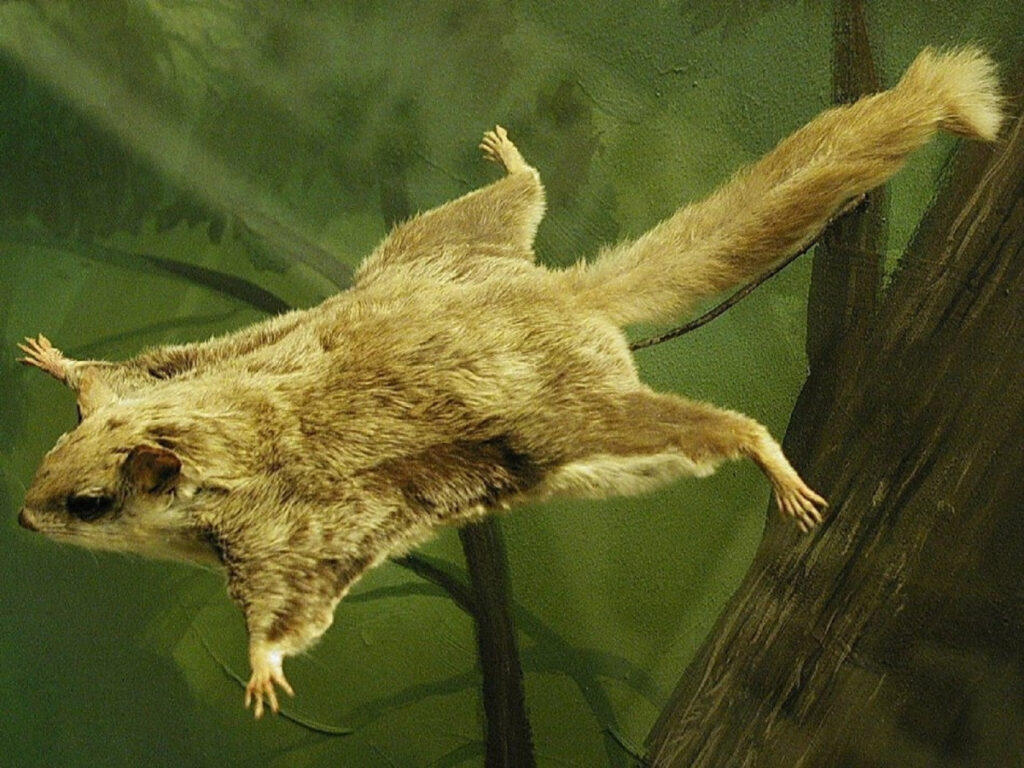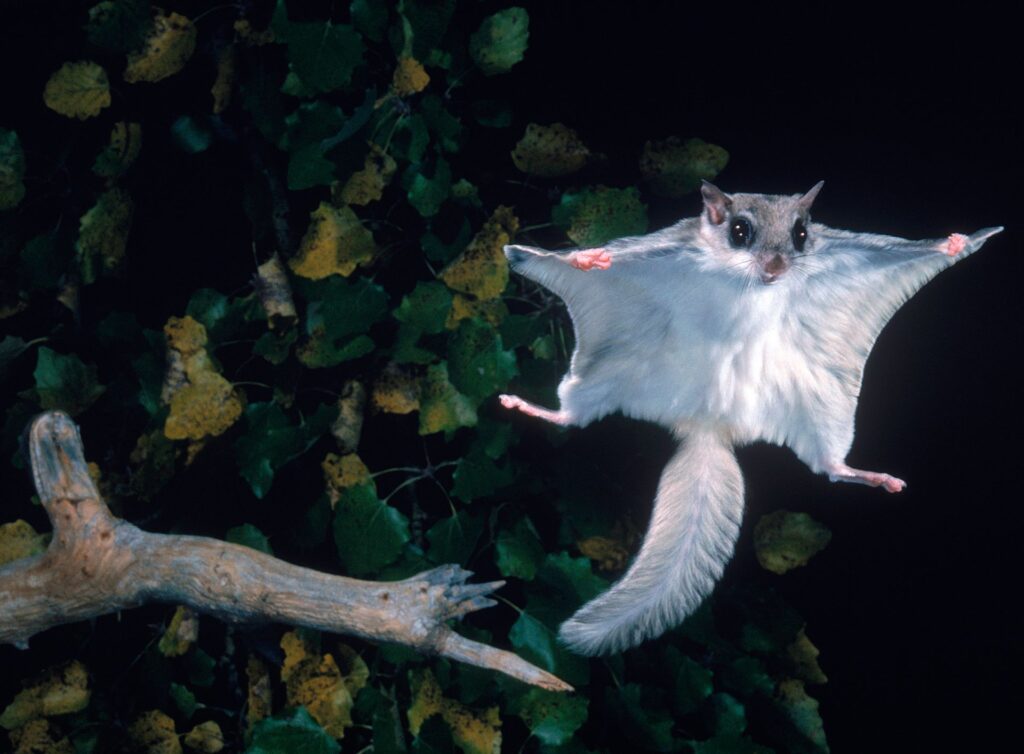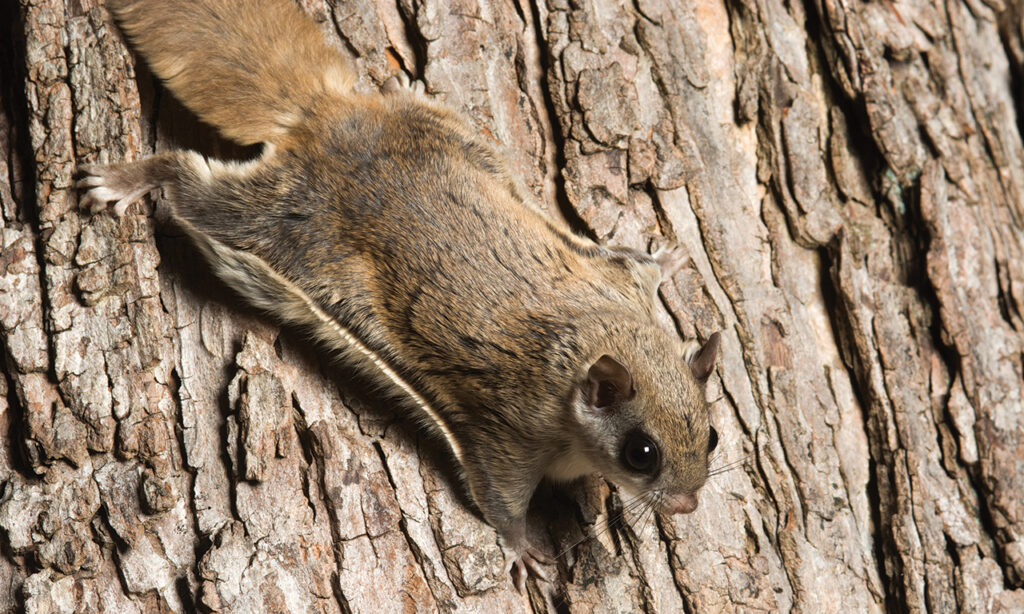Squirrels are found almost anywhere on the planet, but few can match the wonderful Flying Squirrel. These small rodents are noted for the fact that they glide through the trees, flying silently to evade predators. They are located primarily in the northern hemisphere. Find out much more below.

the flying squirrel
The flying squirrel is a rodent that is scientifically known as Pteromyini or Petauristini and is part of a group that includes 45 varieties of squirrels. They have an average lifespan of six years, and in captivity they can live from ten to fifteen.
Features
Its physical appearance is small, where an adult reaches about 20 centimeters long, excluding the tail, and weighs 150 grams. Their ears are tiny and do not have tufts of hair. Although it is true that this creature does not fly like birds, it has earned that name because it is capable of "gliding" as far as 80 meters in a single jump and this can be done thanks to its stupendous gliding membranes. .
It can glide thanks to the aforementioned membranes that join its front and rear legs. The front part of this membrane is supported by a cartilaginous spur that arises from the joints of the hands. And although it seems that there are only two layers of skin, there is a thin layer of muscle that allows these squirrels to modify the curvature of the glider area to alter its aerodynamic features, being able to direct or control the trajectory by moving its tail or legs.
His eyes are large and dark looking like black pearls. They are quite convenient for it, since, in contrast to other animals, the flying squirrel is nocturnal and requires good vision to locate its food. This animal attracts little attention, since it moves silently among the treetops.
Where do you live?
The flying squirrel preferably inhabits the forests of any region of the planet, particularly those of North America, and those found from the Baltic Sea to the Pacific Ocean, crossing the Russian taiga. It is in these territories where it builds its nests in the treetops, using branches and leaves.
What does it feed on?
This rodent is omnivorous, so it eats almost anything, but its favorite food is catkins, deciduous tree leaves, conifer buds, seeds, nuts, bird eggs, and mushrooms. Like the other species of squirrels, during the fall, it stores food in hiding places among the branches and holes in the trees, which it will consume in winter when there is little food available.
Reproduction and Birth
As part of sexual courtship, the male uses his "flight", with which he will impress the female. Both an empty birdhouse and a hole in a tree serve as a nest and there are even couples who build them in a barn. Gestation lasts a maximum of 39 days and at the end of spring or beginning of summer two or three offspring are born. These are a little smaller than a fingertip, they can't see, they are hairless and they are vulnerable, but before the end of autumn, after ten weeks of existence, they will have grown up and will be able to leave the nest.
Domestication and Dangers
It is not very common to have a flying squirrel at home, but those who have decided to have it agree that it is a sociable animal that must be provided with an appropriate environment, that is, large enough so that it can move easily. This tiny rodent has various predators such as snakes, owls, coyotes, raccoons, martens and cats. Therefore, it is essential to be silent and escape as soon as possible from the jaws of their predators.
Flying Squirrel Species
Of the total of 45 species of flying squirrels known throughout the planet, below we will detail the three most important:
Woolly Flying Squirrel
It lives in the Kashmir region (north of India), Tibet, China and Pakistan, preferring coniferous forests near caves and precipices. It is the largest known weight and size and can reach 60 centimeters long. It is similar to those that cannot glide: with a small head, a long tail, and thick, dense fur that looks like wool.
Northern Flying Squirrel
Puebla in North America and is 100% nocturnal (other species have diurnal habits). It can be found in the coniferous forests between Alaska and California, and there are two subspecies: one that lives on the Pacific coast and another south of the Appalachian Mountains. Its skin is thick, brown and gray with a whitish abdomen, huge eyes and a flat tail. It is recognized by its long whiskers and by the membrane that allows them to glide between trees.
Siberian Flying Squirrel
Very similar in appearance and lifestyle to common squirrels as it has gray or brown fur and a long tail. His flight takes him up to 35 meters away. It lives in mixed forests in northern Europe, but unlike other locals it does not hibernate, but it does accumulate fruits, berries, mushrooms and grains for the winter. It survives thanks to its shyness, its nocturnal habits and its stealthy movements.
https://www.youtube.com/watch?v=RtncnnPam90
We also recommend these items:

